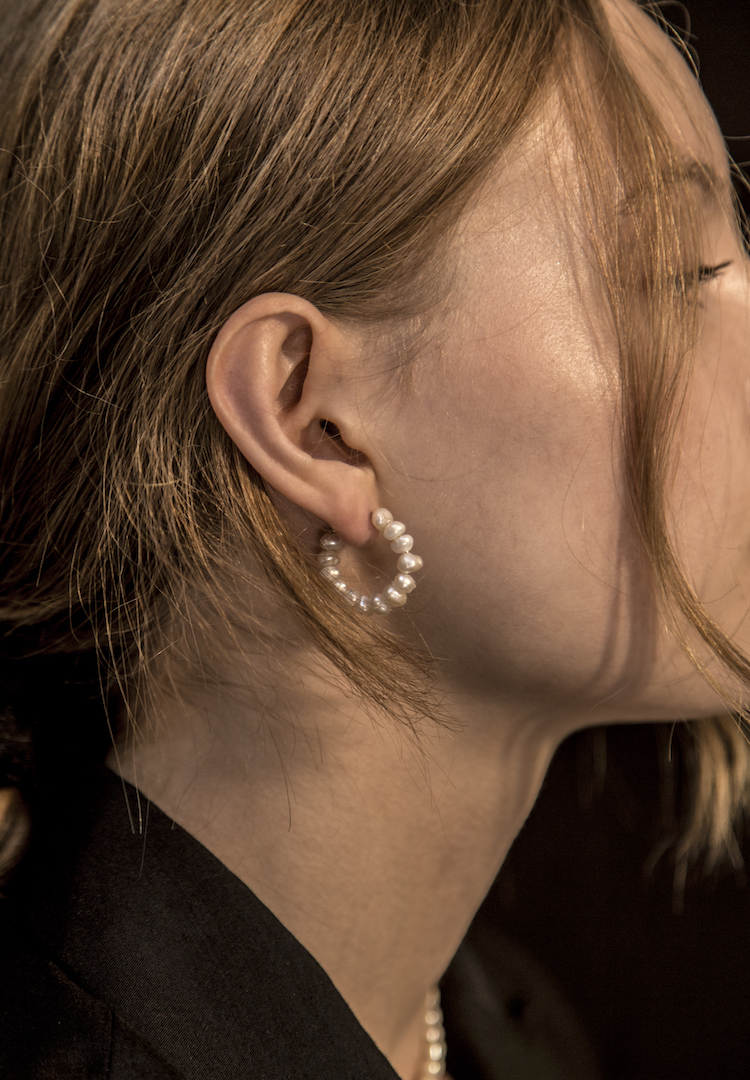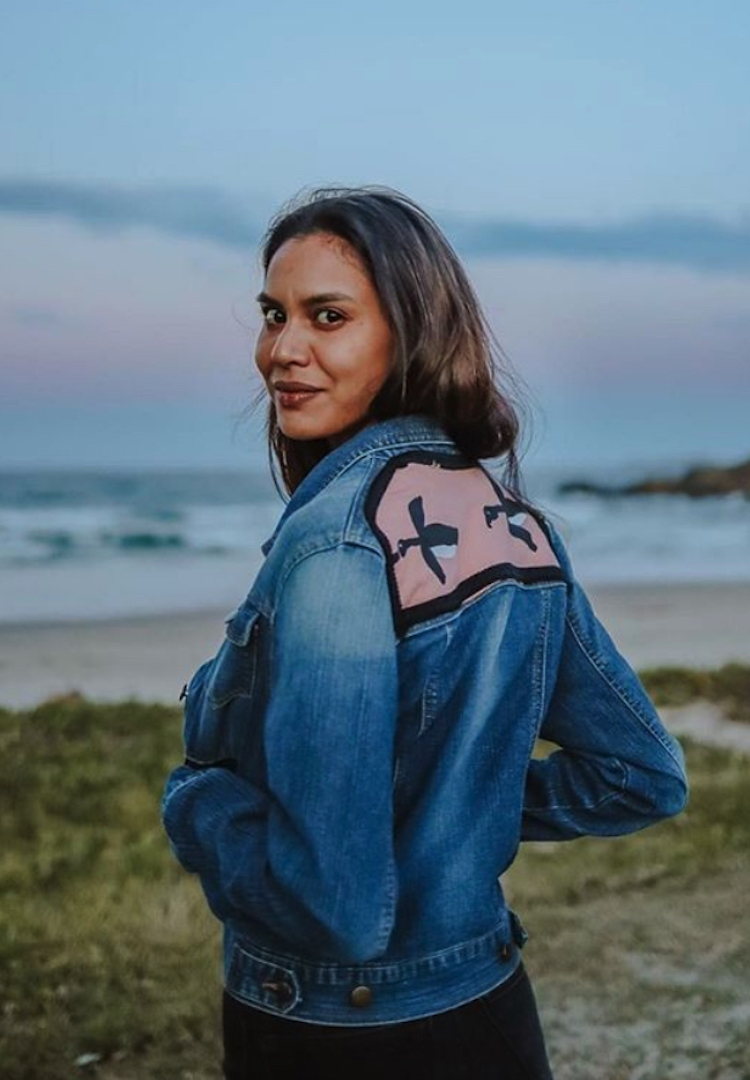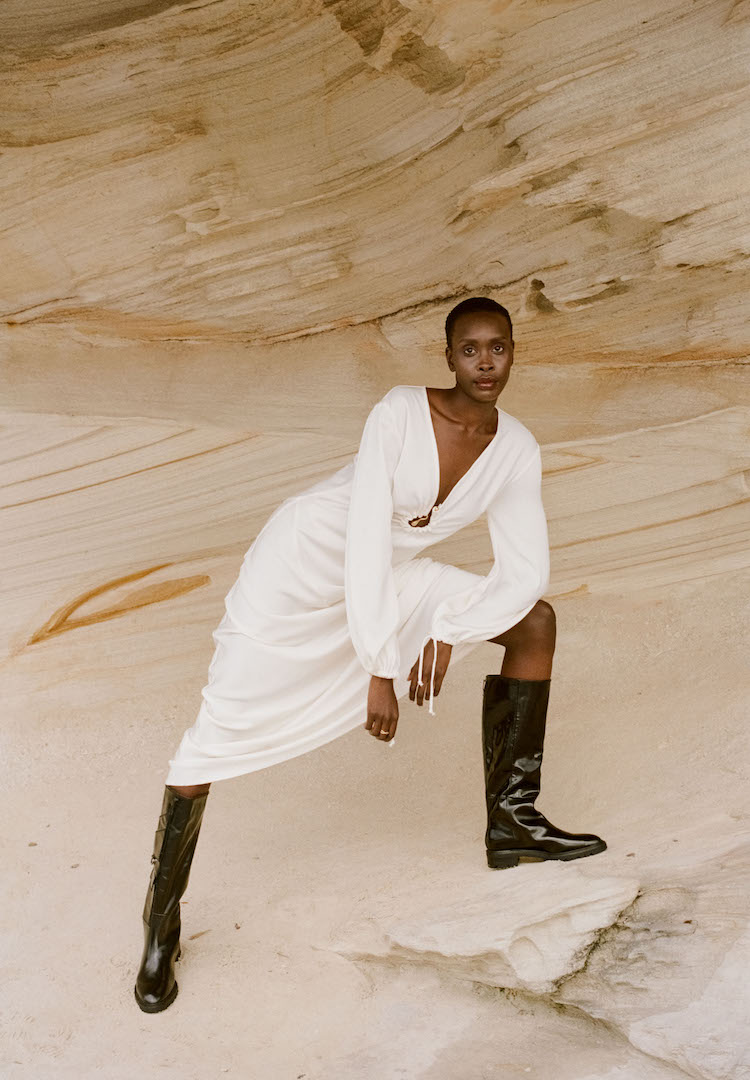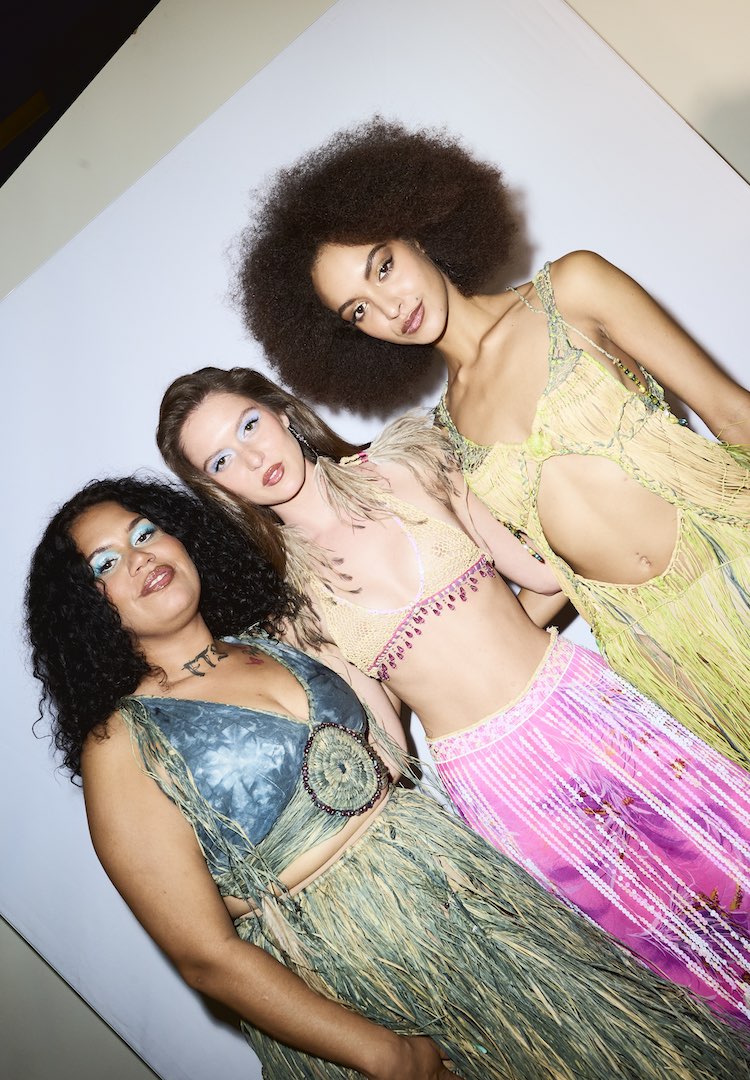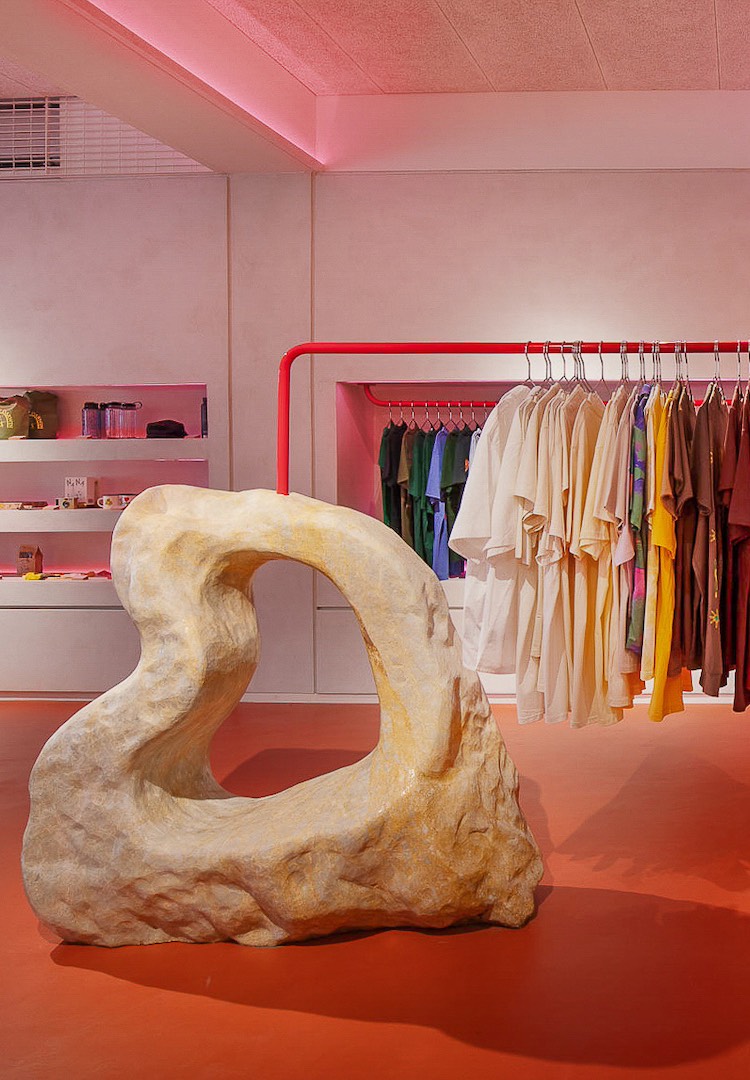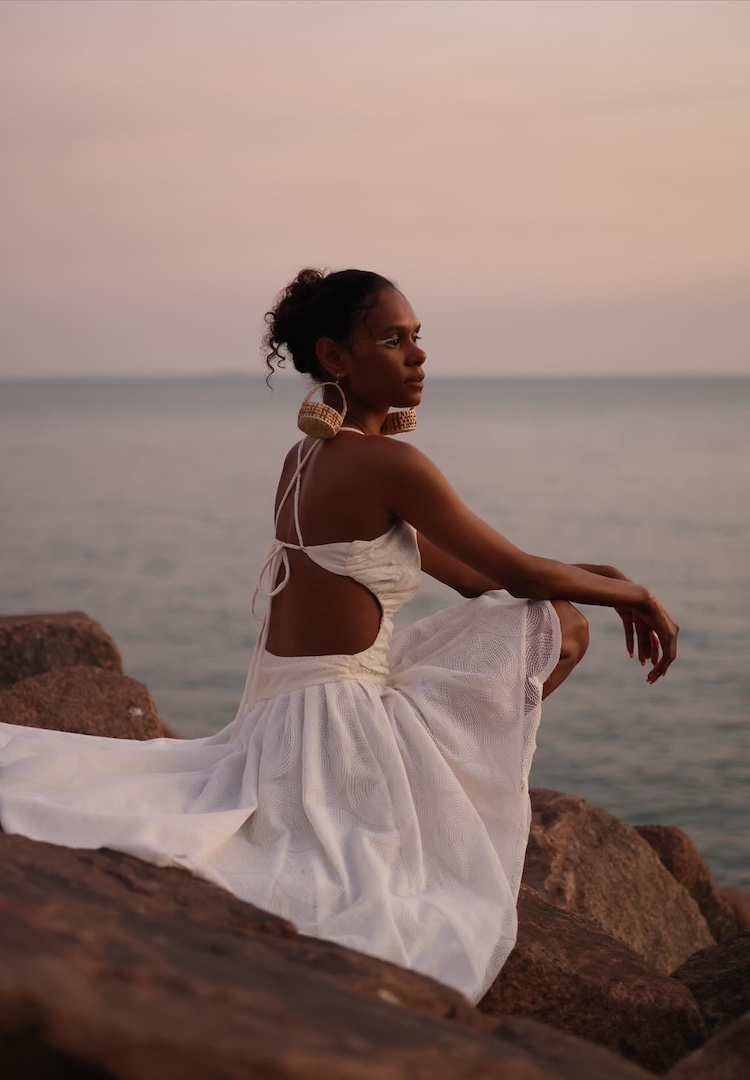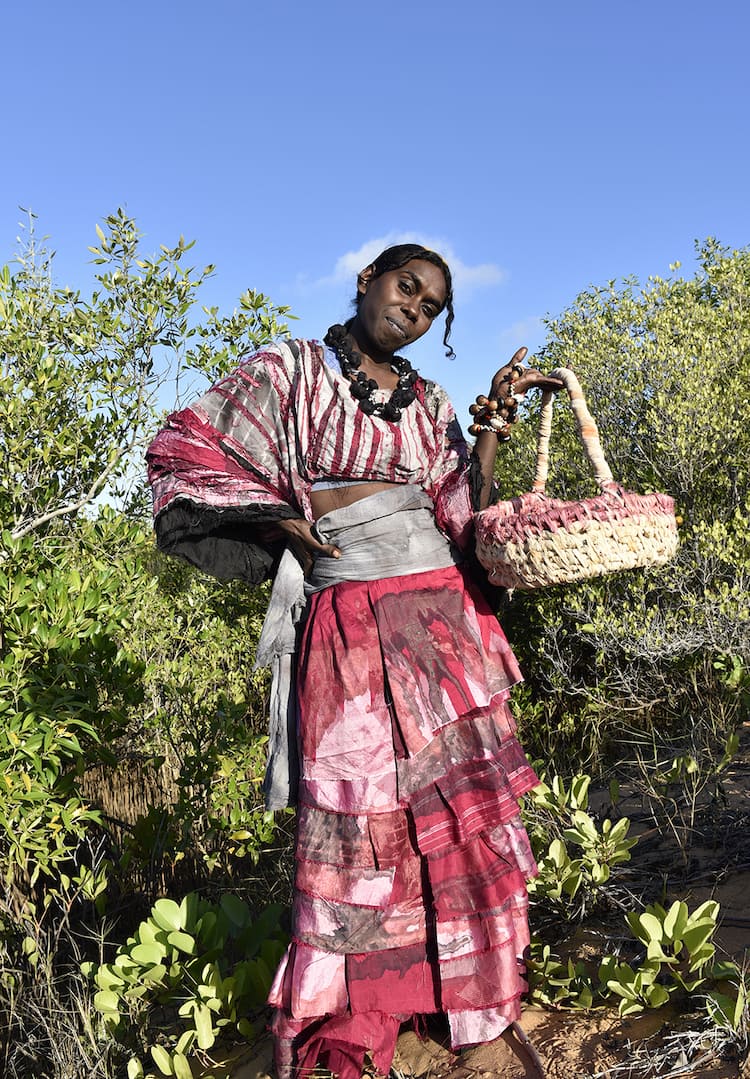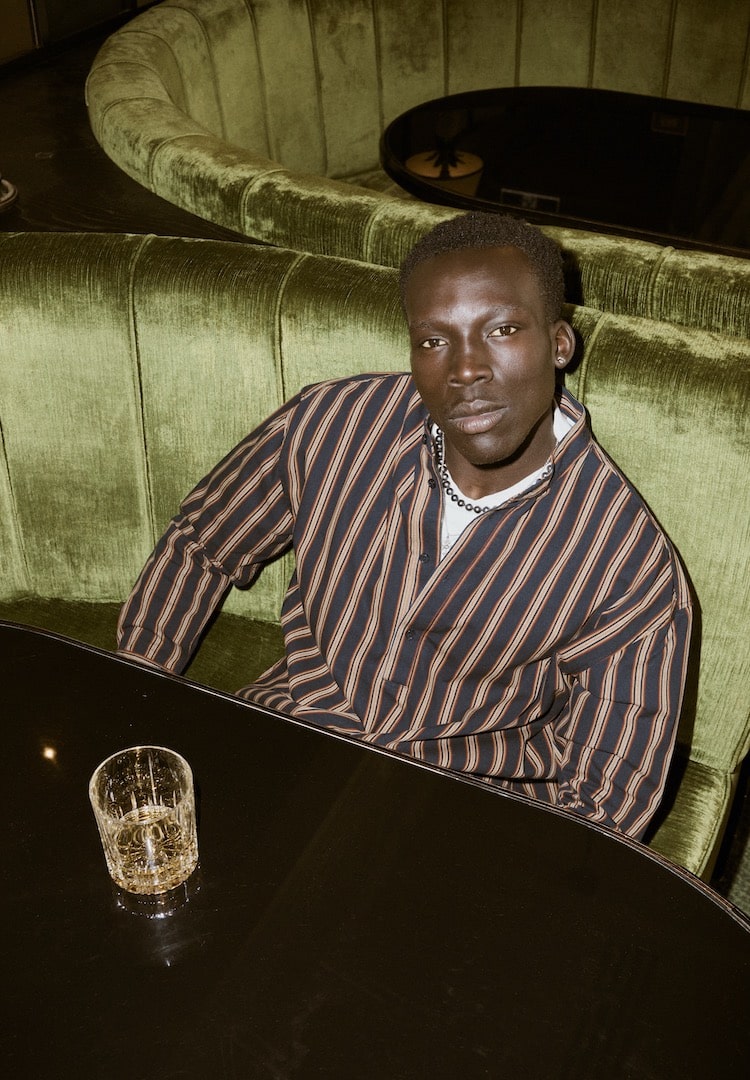How to ensure our support of Australian Indigenous fashion extends beyond this moment
IMAGE – BAREFOOT WANDERING PHOTOGRAPHY FOR DEADLY DENIM
MODEL – JESSICA MERCY
WORDS BY NINA FITZGERALD
“I think it should start with respect and understanding and acknowledgement.”
At Fashion Journal, we’re working with Bank Australia to amplify voices that matter as part of Bank Australia’s ongoing mission to support people and the planet. Here, FJ contributor Nina Fitzgerald speaks with Yatu Widders Hunt, founder of Australian Indigenous Fashion and proud descendant of the Anaiwan and Dunghutti peoples, about how the fashion industry can ensure our support of Australian Indigenous fashion exists beyond a trend.
Australian First Nations fashion brands are finally starting to receive widespread industry acknowledgement, praise and support. And amid the Black Lives Matter movement pulsing throughout the world, it is an about-time moment for First Nations Australians.
Yatu Widders Hunt, of the flourishing Instagram account @ausindigenousfashion, comes from a PR, communications and journalism background. She believes a stronger and more sustained promotion of the amazing First Nations fashion projects happening right across Australia – in remote, regional and urban centres – will help ensure non-Indigenous Australians increase and continue their support beyond this current trend.
“I covered a lot of Aboriginal fashion stories,” she says. “I covered the first Indigenous Fashion Week in Sydney, but I didn’t think it was particularly visible. People would often ask, ‘What does Aboriginal fashion look like, or is there even a sector?’”
In reality, First Nations people have made cultural adornment pieces since time immemorial, and bold textiles have been produced in remote Aboriginal community art centres since the late ’60s.
“As a consumer, living busy lives, it’s not in the first page you open in a magazine, it’s not on the online store that you visit, it’s not in the mall that you go to. It would be really lovely to see sustained coverage,” says Yatu.
The fashion industry is certainly not known for diversity. We don’t see a lot of coverage of what is happening in the First Nations fashion sector. But Yatu is noticing improvements.
Since starting her Instagram, which she made in response to this lack of promotion, she has been overwhelmed by the ever-increasing level of engagement from both the broader Australian community, as well as the mainstream fashion sector.
Support has also flowed beyond Yatu’s Instagram to the designers and creators she highlights, including recently showcased labels like Litiyalla, Deadly Denim, Arkie the Label, Bima Wear, Roots and Mirrigal, alongside Yatu’s many emerging Indigenous designers to watch.
Major glossies Marie Claire and Vogue are beginning to take a much stronger stance on supporting Indigenous affairs. Marie Claire dedicated its February issue this year to Indigenous constitutional recognition and boldly threw its support behind the Uluru Statement from the Heart. For this, Yatu says she was immensely proud.
“That was the first big media outlet I have seen that’s just gone yep, we are just going to support it and put three Aboriginal women on the cover for the first time!”
Still, it’s not time for the Australian fashion industry to rest on their laurels. Some big shifts still need to occur.
“We have also seen some great initiatives from magazines like Vogue, where they have appointed a sustainability editor and [where] there is now the opportunity to dedicate some space and resources to covering First Nations fashion as well.”
Additionally, Yatu contends, “…the big fashion weeks have a role to play in acknowledging Aboriginal fashion and design as part of the Australian fashion story, and our history.”
While Melbourne Fashion Festival is showing great progress in this acknowledgement on its runways, unfortunately Mercedes-Benz Fashion Week Australia was postponed this year – another casualty of COVID-19. It was set to include, for the first time in its 25-year history, a dedicated showcase celebrating First Nations fashion.
“Fashion weeks can do a great job at shining a light on the Indigenous fashion industry and creating space for not only the runways, but also the conversations. Those kinds of things send a really strong message that shows a level of respect for Indigenous design tradition and how impactful and important it is as part of our Australian narrative.”
Consumers are already jumping into these conversations with keen enthusiasm. On Instagram, Yatu is inundated with comments of encouragement and support. People also want to know more about First Nations fashion designers and creatives, and their unique designs and stories.
“A lot of the work we are seeing is so diverse. It challenges people’s perceptions of what Aboriginal art and design is. It is grounded in really ancient traditions, but in many expressions, it is incredibly contemporary and vibrant and fun, and speaks to our contemporary identity and our facing the world now. That is exciting!”
All of these parts – from the strong appetite and interest from consumers and the general public, to the sustained elevation of First Nations fashion creatives and artists in mainstream media – work together to support the diversity of Indigenous business, and the ethical pathways to purchase artwork and design.
“It is also a really nice pathway to learn more about the diversity of our stories and culture as well. We are on a pathway to reconciliation, but we have a bit of a way to go to really honour and celebrate First Nations voices as part of our national identity and part of our national story.”
It’s easy to think that fashion is a far cry from meaningful reconciliation with Australia’s First Nations peoples. But, by continuing to amplify these voices, the fashion industry and broader Australian society is working towards equality for the original custodians of this land. These voices which have connected to Australia for thousands of years, must be heard beyond just this pivotal moment. Reconciliation is an ongoing journey. More than a commitment to respecting First Nations people, it is about proudly championing their cultures and stories.
And as Yatu says, “Fashion and design and creative works provide a really nice pathway to exploring that together. It not only supports our communities, but also helps to build relationships and understanding of each other.”First Nations peoples’ agency within the fashion industry is certainly growing. Artists, designers, and creatives are pushing the boundaries so that their voices are heard and included in the Australian fashion narrative. It is time for Australia to listen.
By supporting the industry’s continued and long-term amplification of Indigenous Australian designers, Bank Australia is supporting people and the planet. If you also want to support people and the planet, switch to clean money with Bank Australia. They don’t invest in harmful industries like fossil fuels or live animal exports, and do invest in renewable energy and not for profits.
Both Fashion Journal and Bank Australia are proud to support Yatu’s work within the First Nations fashion space highlighting Indigenous designers and creators.

